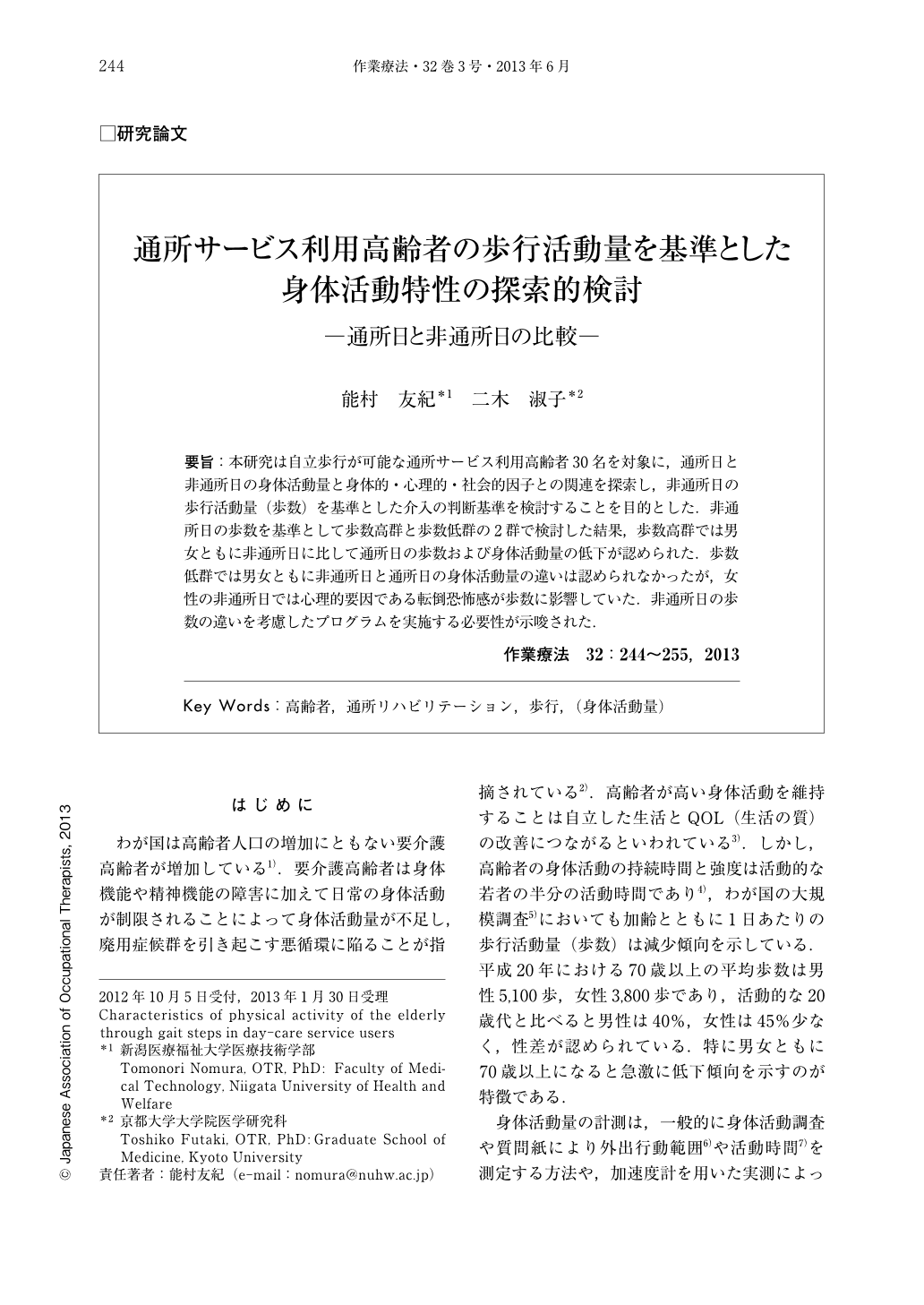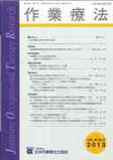Japanese
English
- 販売していません
- Abstract 文献概要
- 1ページ目 Look Inside
- 参考文献 Reference
- サイト内被引用 Cited by
要旨:本研究は自立歩行が可能な通所サービス利用高齢者30名を対象に,通所日と非通所日の身体活動量と身体的・心理的・社会的因子との関連を探索し,非通所日の歩行活動量(歩数)を基準とした介入の判断基準を検討することを目的とした.非通所日の歩数を基準として歩数高群と歩数低群の2群で検討した結果,歩数高群では男女ともに非通所日に比して通所日の歩数および身体活動量の低下が認められた.歩数低群では男女ともに非通所日と通所日の身体活動量の違いは認められなかったが,女性の非通所日では心理的要因である転倒恐怖感が歩数に影響していた.非通所日の歩数の違いを考慮したプログラムを実施する必要性が示唆された.
The aim of this study was to clarify characteristics of physical activity in elderly day-care service users by quantifying gait steps. The subjects were 30 frail elderly (10 in a high gait steps group and 20 in a low gait steps group) who regularly used a day-care service. An accelerometer was used to measure the amount of physical activity, and physical activity, as measured by the number of steps, was compared between the two groups. The high gait steps group was less physically active and took fewer steps on days that they were using the day-care service than on non-use days. The low gait steps group showed no significant difference in the amount of physical activity between day-care service use and non-use days; the number of steps on non-use days was related to fear of falling and the amount of physical activity. Fear of falling affected physical activity in the low gait steps group. These results suggest the need to intervene in the number of gait steps.

Copyright © 2013, Japanese Association of Occupational Therapists. All rights reserved.


